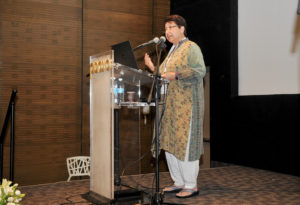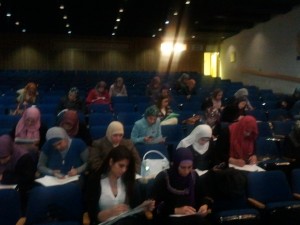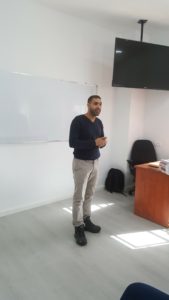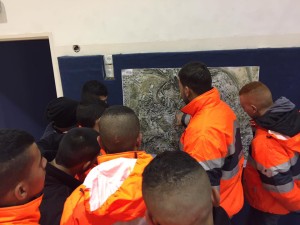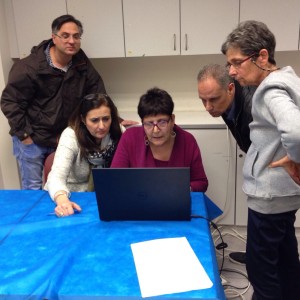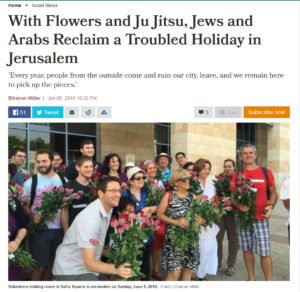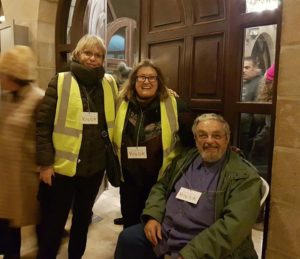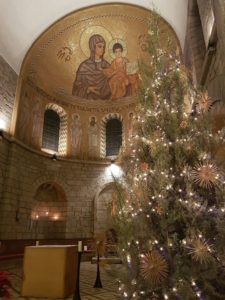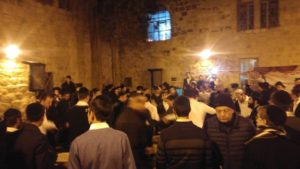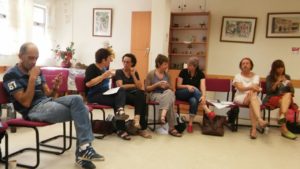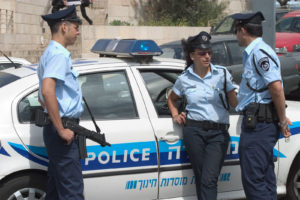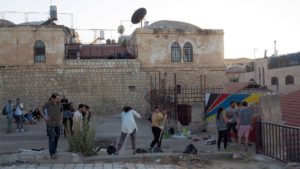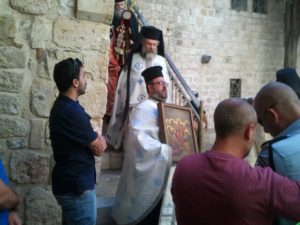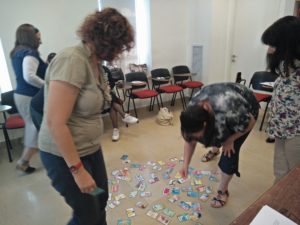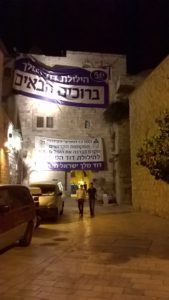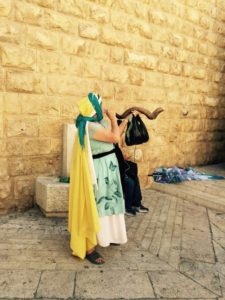2016 – What a Year!
As we jump head-first into 2017, we wanted to take a minute to reflect on 2016, and what a year it’s been! Overall, a year of unprecedented growth and development, and we can’t wait to get started in 2017. Here are some highlights:
Cultural Competence
- The Jerusalem as a Culturally Competent City conference in May 2016, organized jointly by the JICC and the Jerusalem Foundation as part of its 50th anniversary celebrations, was a turning point for the JICC. Attended by hundreds of professionals, from Jerusalem and throughout Israel, the conference presented strides that have been made over the past 10 years, and set the stage for the next step of meeting diverse residents’ diverse needs, in all areas of life.
- Continued work in the health care system, in Jerusalem and as a model throughout Israel, training in-house coordinators and facilitators to increase sustainability and adaptability within individual institutions. For the first time, work included a national network of hospitals and clinics.
- Expansive work in the Israel Police Force, reaching most police stations and present and future commanding officials, and continuing to expand training in 2017.
- Groundbreaking work with the National Insurance Institute (NII), East Jerusalem branch, the first NII branch in the country to undergo a process of cultural competence.
- In the Jerusalem Municipality, the entire Community Services Administration, which includes welfare, public health, immigrant absorption, and more, is undergoing training, as well as the Auditor’s Office which will be able to look at the entire Municipality’s operations through the prism of cultural competency and sensitivity.
- Santé Israël, the first web site to make Israel’s health care system accessible to French speakers, celebrated its first birthday.
Paramedical Professionals
Making healthcare practitioner exams accessible to Arab residents of east Jerusalem
2016 was an important year for us to take stock of the past four years of this program. Our conclusions show that:
- The number of certified Arab paramedical professionals in East Jerusalem has grown significantly.
- The program has enabled the JICC to more clearly map the situation of different paramedical professions in east Jerusalem, contributing to the knowledge of training in the Jerusalem area.
- The awareness both among Palestinian institutes of higher education and health care institutions in east Jerusalem as well as Israeli Ministry of Health has been raised significantly.
- A large window of opportunity for Arab women paramedical professionals to improve economic opportunities has been opened.
Talking Coexistence – Arabic Language Instruction
Both 2015 – 2016 and 2016 – 2017 broke enrollment records. In 2015-16 there were 180 students in 12 classes, over 5 levels. In 2016-2017, there are 240 students in 16 classes, also over 5 levels. We also held several cultural evenings to enrich students’ understanding of Arabic culture. Here’s a short video about the program:
Atta’a Assistance Center for the Rights of East Jerusalem Residents
The Atta’a Center has been in existence since 2004, and in 2015 it came under the aegis of the JICC. In 2016 we have seen:
- 70% growth in number of requests
- Ballooning of its Facebook page to over 7,100 ‘likes,’ and launching of its web site.
- Publication of a widely-referenced booklet on the Ministry of Interior
- Expansion of network of partners in action, both from NGO’s and advocacy groups as well as municipal and government agencies.
MiniActive for Arab Residents of East Jerusalem
- For the first time ever, MiniActive activities led to a change in policy. After months of campaigning, MiniActive led the way toward the addition of 3 million NIS to the annual municipal sanitation budget for east Jerusalem, and 16 million NIS for the purchase of additional equipment for sanitation. As a result of this work, the entire Municipality is focusing their attention on garbage collection throughout
- In January 2016, MiniActive organized the first ever Arabic language Horticulture Therapy course in Jerusalem for special education teachers, in cooperation with the David Yellin Academic College of Education.
- Bus stops in entire neighborhoods were repaired and replaced, thanks to MiniActive.
- 210 women – including 50 youth – are studying Hebrew through a volunteer NGO to improve the effectivity of their activism. This is a record-breaking number, which broke last year’s record of 150 women.
- In MiniActive Youth for the Environment, teenage girls learn leadership skills while participating in major environment-improving public art and other projects in neighborhoods throughout east Jerusalem.
- MiniActive became a model for international work, hosting a delegation that works with the Roma population in the Czech Republic in November 2016.
Take a look at MiniActive’s own year in review. It’s pretty easy to understand, even if you don’t know Arabic:
Emergency Readiness Networks
In 2016 we expanded the network to include 14 communities throughout Jerusalem. In addition to training new volunteers, the program included training of existing networks to maintain ability to respond and increase sustainability.
Multicultural Participatory Democracy
In 2016 we mentored community center staffs in Gilo, Kiryat Menachem, Givat Messuah, Baka’a and south Talpiot. For the first time, residents – especially the Ethiopian community in Kiryat Menachem and the highly diverse community of south Talpiot –felt that they were able to influence issues that affected their everyday lives. Training included using Facebook as a community-building tool key to increasing residents’ engagement in community processes.
Promoting Tolerance in the Public Sphere
Since the summer of 2014 the JICC have been at the forefront of promoting tolerance in Jerusalem. 2016 accomplishments include:
- A Different Day in Jerusalem celebrated Jerusalem’s diversity through 50 coordinated events, affecting tens of thousands of people on Jerusalem Day. It was the first time such a broad effort has been made to celebrate Jerusalem’s diversity.
- JICC-mentored Speaking in the Square and other tolerance initiatives that came in their wake led to the redesigning of Zion Square, to be called Tolerance Square. The initiative’s Effective Dialogue methodology spread, and is now being presented in national frameworks.
- 0202-Points of View from Jerusalem are now liked by nearly 80,000 people and reach some 150,000 people weekly on Facebook and the Internet. The network now includes pages that translate from Arabic to Hebrew, from Arabic to English and one which brings news from the Ultra-Orthodox world to the awareness of the general population.
- The JICC was asked to be one of the leading organizations in the Coalition of Civil Society Organizations to Promote Tolerance, formed by the Center for Young Adults and the Municipality’s Young Authority.
- The JICC is continuing to develop Tolerance Network Teams (TNT’s), a series of neighborhood-based and theme-based grassroots initiatives that seek to advance tolerance in Jerusalem.
Window to Mount Zion
Since October 2015, Window to Mount Zion has bridged inter-religious and inter-community gaps that have festered between Jewish, Christian and Muslim groups for centuries. As a result of its activity over the past year:
- In unheard-of cooperation, religious Jewish and Christian groups have issued joint statements condemning hate crimes on Mount Zion.
- Christian ceremonies, which in the past have caused inter-religious tension, proceeded without incident.
- The celebration of Christian and Jewish holidays that coincided simultaneously, which in the past had been the source of conflict and tension, also proceeded smoothly.
Asylum Seekers
The JICC, together with the Jerusalem Municipality, sponsor the only paid public servant in Israel to help asylum seekers, outside of Tel Aviv. We are also part of a consortium of organizations and agencies that seek to meet the needs of asylum seekers living in the city.
Thank You!
Many many thanks go out to our partners in action and our donors. You can read about our activities in more detail either by clicking on the hyperlinks above, or by clicking here.
Looking forward to making 2017 even better!

